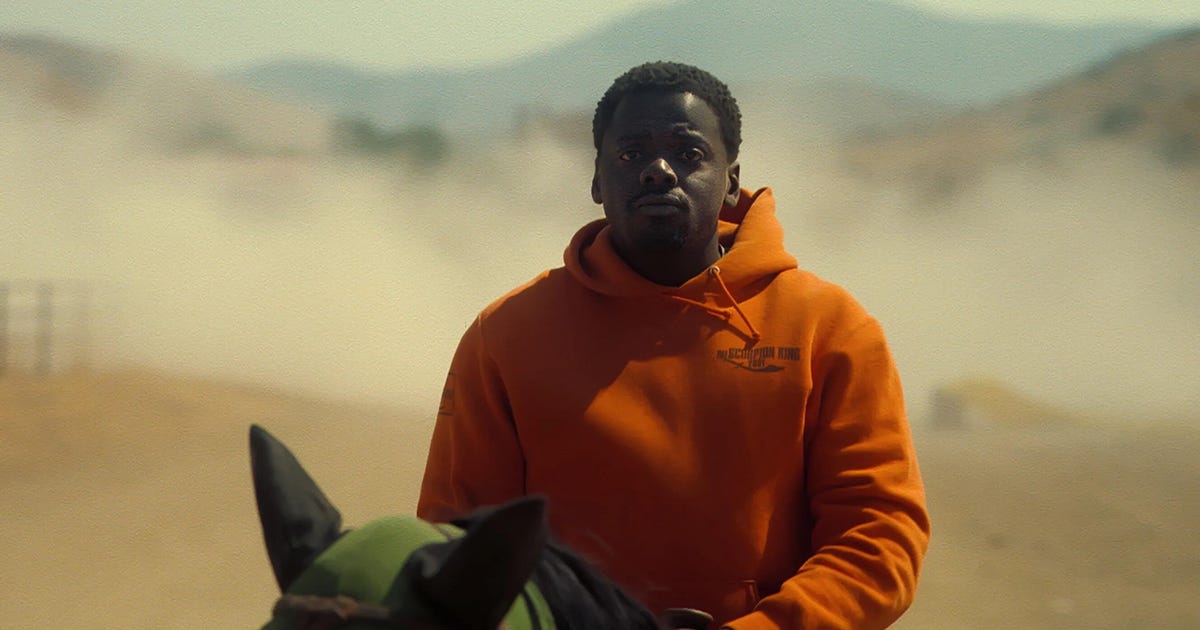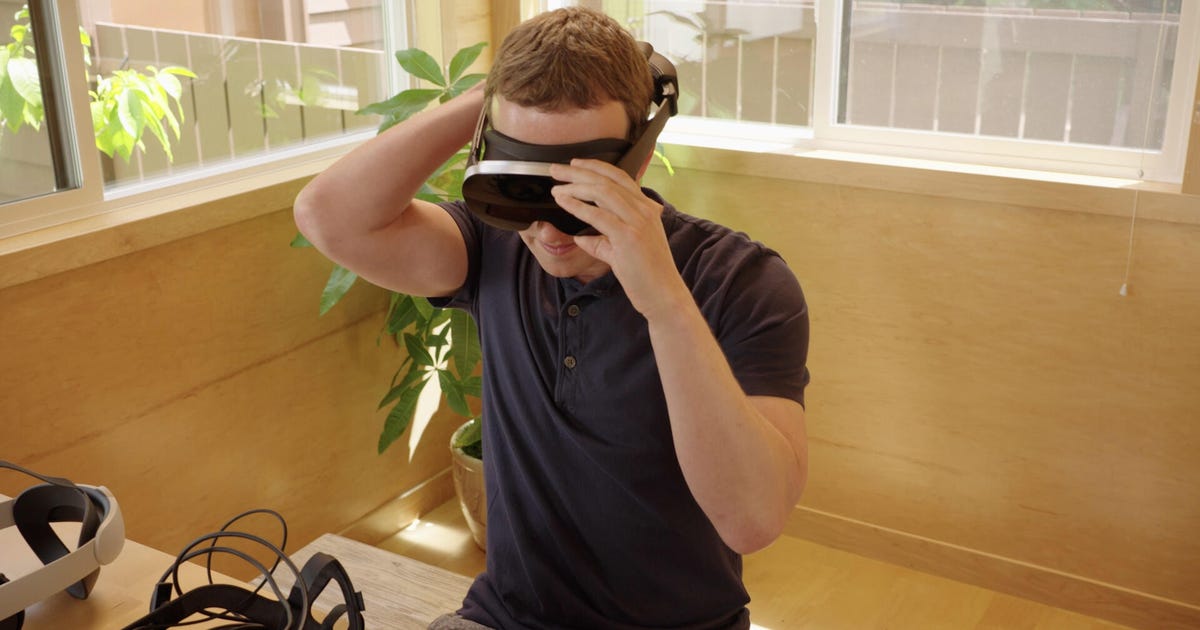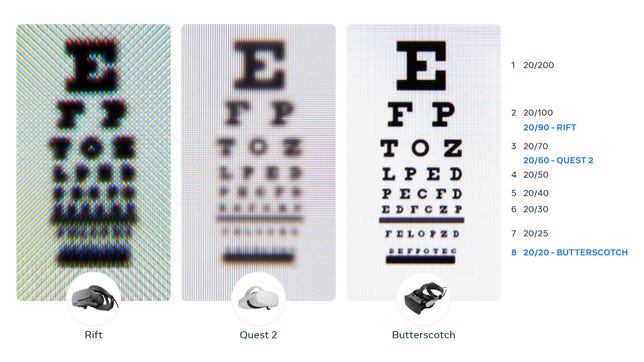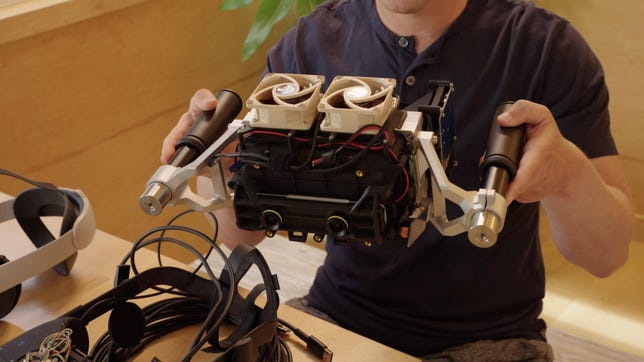
Jordan Peele's 'Nope': Ending Explained, Your Questions Answered
So you just saw Jordan Peele's new sci-fi horror blockbuster, Nope. Maybe you have questions about how things went down in that thrilling finale, or you're stuck wondering what the flick must actually be about.
When I walked out of a screening a few weeks ago, a sense that I wasn't getting the big message in Peele's latest weighed on me like an ominous cloud over the Southern California desert. Peele has touched on what the film is about in interviews, but before we get to that, let's break down the ending. Nope runs more than two hours and follows horse trainers (and siblings) OJ and Emerald Hayworth, who discover something large and mysterious is lurking in the sky near their ranch.
The flick, by the way, currently sits at a score of 77 on CNET sister site Metacritic.
Park your horse here if you still haven't seen Nope -- there are spoilers ahead.
What plan do OJ, Emerald and the others devise?
OJ and Emerald are set on getting proof (the "Oprah shot") of the extraterrestrial creature in the sky, even after it snacks on Ricky "Jupe" Park and others at the nearby Jupiter's Claim theme park. (I don't know about them, but the sight of blood rain would have signaled the end of the road for me).
They team up with cinematographer Antlers Holst, who has a non-electrical film camera (the beast produces an "anti-electric field" that renders things like digital cameras useless). They also deck out the area with tons of inflatable tube men. When those fall down, it's a sign that the creature is close by. They also know that they need to avoid looking at the beast, and that it doesn't like to consume inanimate objects like decorative flags.
Once they're ready to invite the beast back, OJ starts roaming around on a horse. He's carrying a string of triangular flags attached to a parachute, and it comes in handy later when a stranger shows up and provokes our testy guy in the sky.
Why does the creature eat the TMZ guy?
When the gang's plan is underway, a stranger pulls up to the ranch on a bike. Emerald speaks to the man -- whose identity is masked by a helmet -- and realizes he's from TMZ. News has already started to get out about the incident at Jupiter's Claim, and he's poking around for answers.
The TMZ guy proceeds to drive off in what proves to be an unfortunate direction. The beast lurking above powers down his bike and sends him flying. He's alive but in bad shape, and OJ approaches him to help. However, the guy's helmet is reflective -- just like the mirror that spooks OJ's horse at the start of the film -- and OJ realizes he has no choice but to get out of there.
The creature vacuums up the TMZ rep and starts to pursue OJ. That's when OJ unleashes the flag-parachute invention, which gets the beast to back off a little and buys him time to take shelter.
What does the cinematographer Antlers Holst say to Angel?
Holst finally snags the money shot that OJ and Emerald have been after. But then things take a turn. He mutters something cryptic about them not deserving the impossible, and takes off with his camera.
However, it appears the self-absorbed artist can't resist getting one more shot. Holst points his camera at the creature, and then it swallows him.
Does Angel (from Fry's Electronics) live?
Yes, Angel survives the wrath of the beast. His role during the final showdown involves helping Holst. Once Holst and his camera become alien food, Angel wraps himself in barbed wire fencing to avoid a similar fate. The beast tries to suck him up, but the fencing on the ground stays put, and Angel comes barreling back down to the ground. (Another possible reason he survived: The creature probably didn't like the taste of wire.)
What is the thing in the sky?
We get to know the creature in the sky as a white, disc-shaped animal that could reasonably be mistaken for an alien spacecraft from a distance. In the final scenes of the film, the creature transforms into something more immense and billowy. To me, it almost looks like a flower -- well, if that flower had a terrifying, pulsing green mouth.
How does Emerald defeat the creature?
Emerald gets to the TMZ guy's bike, but the creature (which has assumed its new form) is too close to her for it to work. In an emotional scene, we realize that OJ is going to help her by fixing his eyes on the beast, luring it toward himself.
Emerald's bike powers up and she drives to the theme park, Jupiter's Claim. She brilliantly comes up with the idea to injure the beast by releasing a giant inflatable cowboy into the sky.
Earlier in the film, Emerald and OJ visited Jupiter's Claim and Emerald photo-bombed some strangers by sticking her head into a well that contains a camera. In the flick's final minutes, she grabs coins scattered on the ground, loads up the machine and snaps multiple pictures of the sky. The well spits out what look like large polaroid pictures.
Eventually, the beast emerges and consumes the massive floating cowboy. Emerald gets a shot of it. Then, the creature pops. It appears lifeless, like a torn-up plastic bag drifting in the air.
What happens to OJ?
At the very end of Nope, we see a murky figure sitting on a horse just outside of Jupiter's Claim. It's unmistakably OJ, still wearing his bright orange hoodie.
What is Nope really about?
To me, the ending to Nope seemed pretty straightforward: an entertaining cap on an entertaining adventure-horror-thriller. But I also figured there must be a deeper meaning to the final scenes, and to the flick in general, that I hadn't considered. In a July interview with Today, Peele spent a good chunk of time talking about the film's themes.
Speaking with Today journalist Craig Melvin, Peele said Nope is "about a lot of things," including spectacle, race and human nature.
He said when he wrote the film, he latched onto the idea of making a spectacle, "something people would have to see."
"I felt like I was fighting for cinema, I was fighting for the theatrical experience when I was writing this film," Peele told Melvin. "So it's about spectacle. And from there, I explored that and started to sort of uncover what I think is like the dark side of our relationship with spectacle."
On that "dark relationship," Peele said we can use spectacle "to distract ourselves from the truth," or give too much power to things that we're obsessed with -- things that have a spectacular nature to them. He also brought up "bottlenecking."
"When we're driving, we're in traffic and there's an accident, that traffic slows down," Peele said. "It's because everybody's sneaking a peek at that awful spectacle and it's slowing everybody down. And so I latched onto that and said let's make a movie about that."
Peele also told Melvin: "I feel like it's impossible to make a movie with people of color in it (or any movie) and have it not be about race."
"This film, which takes place at the outskirts of Hollywood, or, you know, the industry of the spectacle, is also so wrapped up with this idea of representation and erasure," Peele adds.
Peele didn't directly unpack the ending, but Melvin did ask him what he wanted viewers to think about when they walk out of the theater. Peele offered a bit of a non-answer: "If I had too clear of an idea of what I wanted them to be thinking about, I feel like I wouldn't be having the conversation with the audience. That's up to them."
He then looped back to the one meta aspect of Nope: Yes, it's a film about spectacle, but it's also a spectacle.
"I hope they're just fulfilled, Peele said. "...I wanted to make a flying saucer movie because I just felt like if we can feel like we are in the presence of something 'other,' if we feel like that's real, then that's just an immersive experience worthy of going to the movies."
Source





